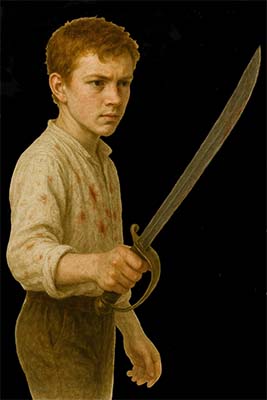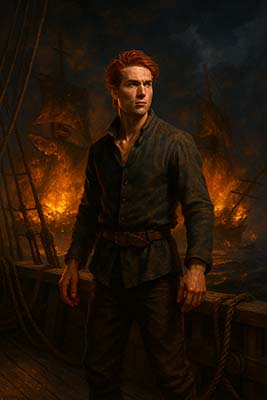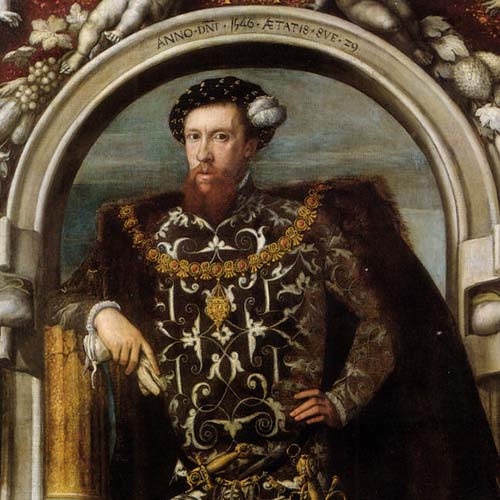AI-Generated Illustrations for Historical Fiction: A Visual Experiment
As you might know, I am a technologist by day, and a historical fiction author by night. One of my favorite subscriptions is to the Economist, and last week’s US Edition featured a magazine cover that was “drawn” by an AI Algorithm. That got my technical interest piqued, and I really enjoyed the magazine's coverage of the theme.
Because the cover was so intriguing, I decided to explore my own, historical fiction-based theme. While these images are not what I would pick for a cover of my upcoming novel Sic Parvis Magna, they are quite interesting as modern abstract art.
The hero image above is prompted by the key phrase “Galleons and Carracks in a Storm” and is rendered in the style of a pencil sketch. While I think I can see the storm part, the galleons are a little bit of a stretch.
I hope you enjoy the results from my experimentation.
Sailing Ships and Surreal Cannons: A Galleon Goes Digital
Illustrations for historical fiction should clearly evoke the sense of the period the book is portraying and the theme it wants to carry. My historical fiction novel Sic Parvis Magna is set in the 16th century and is a coming-of-age sea adventure story of Francis Drake. The prompt for this image was to understand what the AI algorithm “knows” about history of sailing ships and ship types, as well as some of the actions that these ships were involved in. I have done an article on Francis Drake’s ship Tiger which in my research I decided to base on a galleon (the name of the actual ship was lost to history, and it is considered to have been a bark, or a square-rigged ship). Here is the image that was created by this prompt:
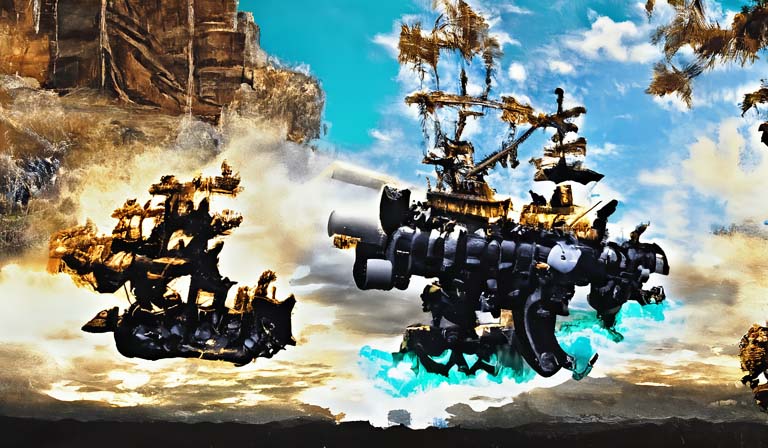
The image is recognizable - the ship above the cannon does appear like a sailing ship (well… perhaps the infamous pirate ship the Flying Dutchman-but a sailing ship nonetheless). I would not say there is enough detail to call it a galleon.
The cannon is something else, isn’t it? I’m sure that Francis Drake, or any pirate captain, would sell parts of themselves to have such a piece of weaponry - and what it appears to be doing to the “galleon” to the left side of the image. I think that if I were to be writing more of a fantasy rather than historical fiction, it might be something useable as a start.
Historical Fiction Illustration: Pirates in a Battle
This prompt was meant to explore what the AI Algorithm thought pirates looked like, and how they fought. It is interesting that the model did seem to zero in on the historical stereotype of a pirate. At least, they look like pirates with drawn cutlasses.
Several of the characters appear to be wearing the “Captain Jack Sparrow” tricorn hats, and if one stares long enough at the picture, I am sure a parrot can be seen as well. There is also something that looks like a rapier (though no known pirate actually used those types of swords much. Cutlasses are much more practical in close-quarters combat on a pitching ship).

Historical Fiction Book Cover: What an AI Algorithm thinks Sir Francis Drake Looks Like
My historical fiction series is about the life of Sir Francis Drake, exploring his adventures, his inner thoughts and motivations. The initial idea was how a farm boy in Tavistock, England is able to grow up and achieve what Drake has.
I have already done a character sketch of my historical fiction version of the young Francis Drake, and this would be an interesting comparison. That sketch is used as the basis of his character in Sic Parvis Magna, exploring his formative experiences as an apprentice on a ship at the age of 12 or 13. The subsequent historical fiction series will explore how those experiences produced the first-rate mariner who circumnavigated the world, a legendary naval commander, and a privateer / pirate that had a price on his head set by not less an adversary than the King of Spain.
Therefore, the last prompt that I gave the AI algorithm was to draw Francis Drake. Here is that image:
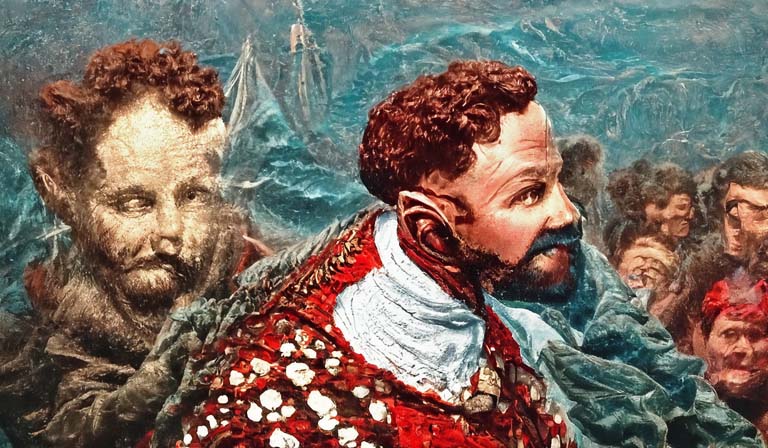
The images are recognizably human albeit with weird features such as pointed ears and odd nose/ eye structure. The interesting thing is what the AI model “got right.”
Drake was known to be red-haired, and in portraits that he sat for we can see that his hair was curly. The two men in the fore of the picture seem to have beards (although not quite the fashionable spades worn at the time).
I think that the figure in the center has some kind of an embroidered, or perhaps slashed jerkin—although the ruff does not really look right. If you look behind the two front characters, there are images that resemble ship masts and sails, and the background is what (to me) appears to be the sea. Fascinating, isn't it?
Final Thoughts on AI-Drawn Historical Fiction Illustrations
In the original September, 2022 version of this post, I commented that will be interesting to see how this AI Art technology develops. Unless very abstract is what was wanted, the images above seem too abstract.
I think part of the adoption of the new technology is learning how to use it more effectively. This was the case for me. While visual issues remain post generation, learning how to effectively prompt the model improved my results, to the point that the generated images are close.
I find that there is manual editing required on most images that I have a particular vision for, and at times, there is a lot of editing and re-drawing. However, the results are far more realistic, and applying AI augmentation cuts the amount of my work required to produce an oil-on-canvas illustration. Here are some later experiments for you to enjoy:
